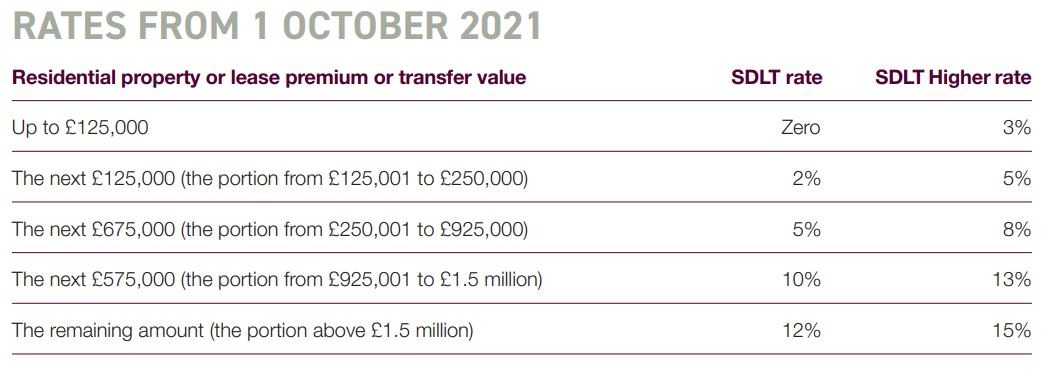October 28, 2021
Article
Despite the lack of housing, we have seen a trend of focus by government on making residential property purchases less attractive. This includes higher capital gains tax rates, 30-day capital gains tax reporting and payment deadlines, restrictions to tax relief on mortgage interest, and higher rates of stamp duty land tax (SDLT).
However, over the last year government introduced an SDLT holiday with savings for purchasers of residential property during the pandemic. These savings ended on 30 September. The rates returned to the following:

As an example, if you purchase a residential property for £500,000 the total SDLT will be £15,000 if it is your only or replacement property.
However, if you are purchasing an additional residential property there are higher rates of SDLT. Using the same example, the SDLT will be double, £30,000, if it is an additional residential property!

Therefore, the SDLT on a non-residential property purchase for £500,000 is £14,500, lower than both a single and additional residential property purchases.
The rules for SDLT are complex particularly when determining the classification of the property (residential or non-residential) to apply the particular rates and when considering whether the higher rates apply.
For the latter the net is cast widely so it can catch circumstances where:
- one spouse already owns a property and they both or the other spouse buys a property;
- a buy to let landlord purchases their first home;
- there is a purchase of more than one dwelling which could include annexes and holiday let units;
- a parent helps to buy their child their first home by reason of a joint purchase;
- a purchase of a property by a partner in a farming partnership which has let property.
It is important to remember that you can be taken to “own” property even in circumstances where you are deemed to have only a small share. It is not uncommon for a farming partnership to own property which is let out and as such, if one
of the partners purchases their first home in their own name, they may incur SDLT at higher rates.
The cost of helping your children to buy their first home has increased with the SDLT surcharge. However, taking advice and considering the way your help is structured can lower the charge.
For purchases of non-residential, or mixed property, the rates may be lower. For example, where a farm is purchased which includes a farmhouse, farm cottages and land, the entire purchase cost could be charged to the lower mixed property rates of SDLT, with no surcharges for additional dwellings. Recently, for example, we have been able to reduce an expected SDLT bill of over £105,000 to less than £25,000. Further, for purchases of six or more dwellings the non-residential rates can apply, with no higher rate charge.
In addition to ensuring the correct rate applies to a transaction consideration
should also be given to relief from SDLT. This is particularly important if the
purchase involves multiple “dwellings”. Relief in such circumstances can reduce the rates of SDLT applying – even in cases where a mixed property is purchased.
Due to the complexity of the SDLT legislation, and the perceived misapplication of the rates and reliefs by purchasers, there have been numerous cases on whether a purchase is wholly residential or mixed property and whether there are additional dwellings on which the higher rates should be applied or where relief has been claimed. Therefore, it is important advice is taken early on when buying so the potential SDLT cost is understood.




